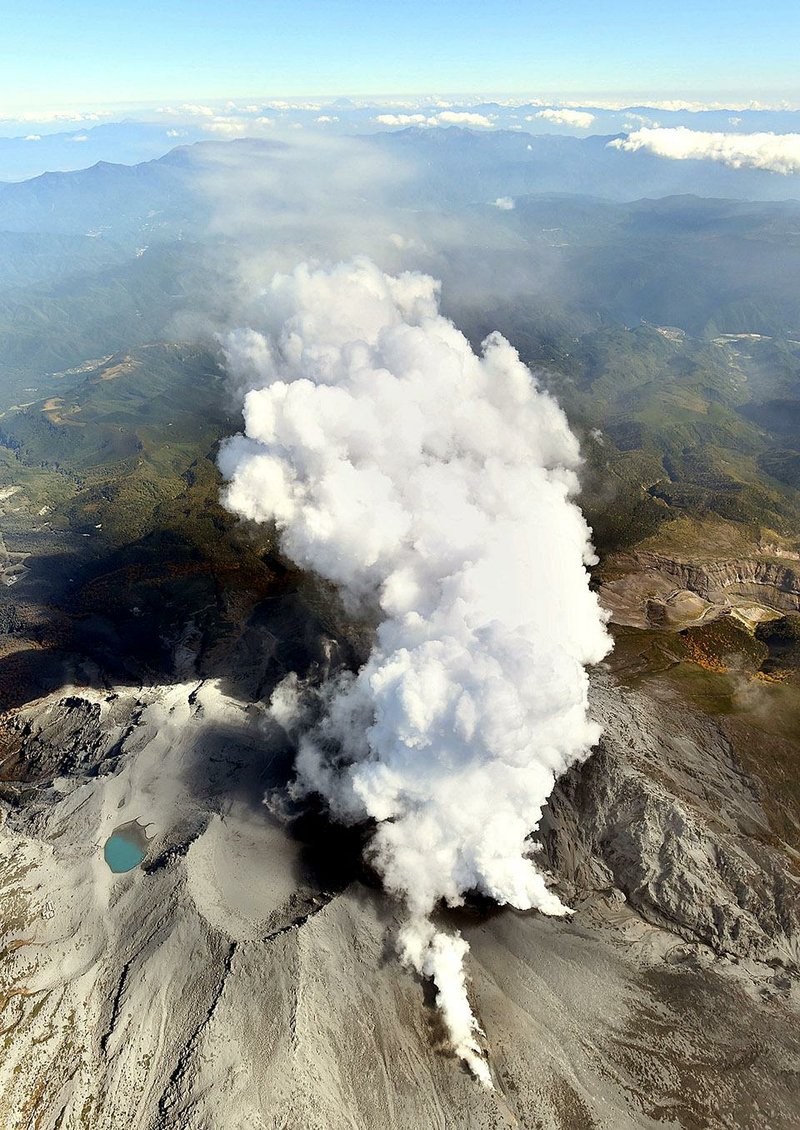TOKYO -- Boulders falling from the sky. Billowing gray smoke that cast total darkness over the mountain. Volcanic ash piling on the ground, and fumes filling the air.
Some survivors of the eruption of Mount Ontake made split-second decisions to hide behind big rocks or escaped into lodges that dot the mountain's slopes. Outdoors, other hikers fell after being hit by rocks or suffocated by gases, and were quickly buried in ash. At least 36 people were killed in Saturday's surprise eruption.
For survivors such as mountain guide Sayuri Ogawa, it was a near-death experience. The experience she recalled Tuesday and the accounts of others suggest that luck and instinct made the difference between life and death for the hikers who were in harm's way.
Despite its impressive plume, the eruption was not a major one with lava flow. Yet, it proved deadly because so many people were at the summit on a pleasant day to enjoy hiking and the autumn leaves.
Seismologists had detected signs of increased seismic activity at Mount Ontake, one of Japan's 110 active volcanoes, but nothing signaled an eruption.
One moment, the hikers were enjoying the panoramic view at 10,000 feet above sea level. Some of them were taking off their shoes and resting their feet after the morning climb. Others were cooking ramen noodles on portable stoves. The next moment, they were scrambling for shelter and running for their lives.
Ogawa, 43, was near the summit by herself, rehearsing a coming tour that she was to escort. She was just starting the "bowl tour" around the crater when she heard an explosion, something like the noise of big fireworks, right above her head.
Some people were taking pictures of the plume rising, but she started running down the outer slope. She saw big rocks shoot up high into the sky. Already down a bit from the summit, there was no building in sight, so she found a big rock to protect her from falling rocks. In the next moment, she smelled the powerful odor of sulfur.
"I couldn't breathe, and rocks kept falling down like rain," she said. "I thought I was going to die."
A few minutes seemed like forever. Then she felt a cool breeze in her face and could breathe. She moved to a place with better protection, ducking between two big rock formations where only part of her right leg was exposed. Smoke repeatedly blacked out any sights, and falling rocks smashed against the formation where she was sheltering. Some of the rocks bruised her leg and hip. In the dark, rocks as big as minivans flew past her. The ash had accumulated to knee-deep by the time she stood and hurried to a lodge to inform authorities of a woman with a leg injury she saw along the way.
Dozens of people were crammed inside the buildings as the rocks pelted, some penetrating the ceilings and walls and shattering the windows.
Ontake Summit lodge owner Tatsuo Arai, 70, knew what to do. He was in town for shopping when the eruption occurred and remotely instructed two of his younger staff members on what actions to take.
About 40 people took refuge at Arai's lodge for about an hour and a half, all of them staying on the first floor of the two-story building. He told them not to go near the windows because of the falling rocks.
Speaking briefly to save phone batteries, he gave advice: Avoid the area known as "Haccho darumi" near one of the craters because he was worried about gases there. Later, more than a dozen victims were found dead in that area. "It was my experience and gut feeling," he said.
Hidenari Hayashi, a tour guide specializing in the central Japan mountains, had taken about 40 hikers, mostly senior citizens, up the mountain. They started early, and by midmorning they had left the summit. But walking around the crater, he noticed an unusually strong smell of sulfur that he hadn't noticed in previous visits. Some of the hikers in his group complained about headaches from the gas.
Just as a cable car carrying his group left the station closest to the summit, there was an explosion, which Hayashi initially thought was thunder.
"If we were two hours later, we were the first ones to have been hit," Hayashi said. "I'm grateful I'm still alive."
Ogawa was shocked when she returned to her home in the Nagao prefecture and saw footage of the eruption on TV.
"It was intense. It was almost surreal," she said. "I have to remind myself that anything can happen at the mountains."
A Section on 10/01/2014
